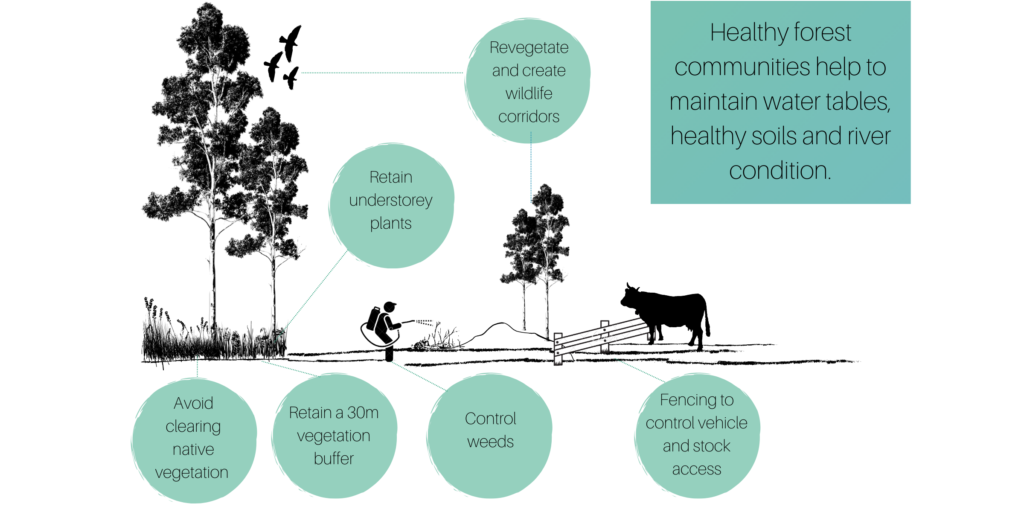A new fact sheet designed to inform farmers about the benefits of managing a rare type of forest community on their properties has just been released by NRM South.
The critically endangered ecological community known as ‘Tasmanian forests and woodlands dominated by black gum or Brookers gum’ is unique to our state. Around 90% of this community has been lost to historical clearing, so it is now protected under Tasmanian and Australian Government law.
Tasmanian farmers are successful stewards, managing vast areas of productive and forested land. As such, farmers are key to protecting remaining stands. Farmers have a growing interest and awareness of the benefits of integrating nature conservation into agricultural land management.
Natural areas on farms can support production, sustainability and increase productivity. The new fact sheet has been developed to recognise the work that farmers do to value and protect these forests. Steps such as fencing or creating vegetation buffers can make a big difference.
Maudie Brown, Senior Project Officer for NRM South, emphasised the importance of recognising the ways production and conservation overlap to support each other. ‘Maintaining or improving the condition of patches of native vegetation on farms can value add to farming activities in many ways,’ explained Maudie. ‘This includes helping with pest management, preventing erosion, and maintaining soil health.’
Working with the Tasmanian Land Conservancy, NRM South are engaging with and supporting landholders to take positive action. An upcoming incentive is NRM South’s ‘Black or Brookers Gum Forests on Farms’ program, providing successful applicants with expert advice, action plans and funding to improve the condition of the community on farmland. More details on this program will be available soon.
The fact sheet is part of a suite of activities that form part of NRM South’s threatened plants project, funded through the Australian Government’s National Landcare Program. It sits alongside a detailed technical fact sheet, which also includes a directory of contacts for landholders to get information and assistance. Landholders wanting to know more about the project or how to access the factsheet can get in touch with NRM South directly: https://nrmsouth.org.au/contact/
-Ends-
